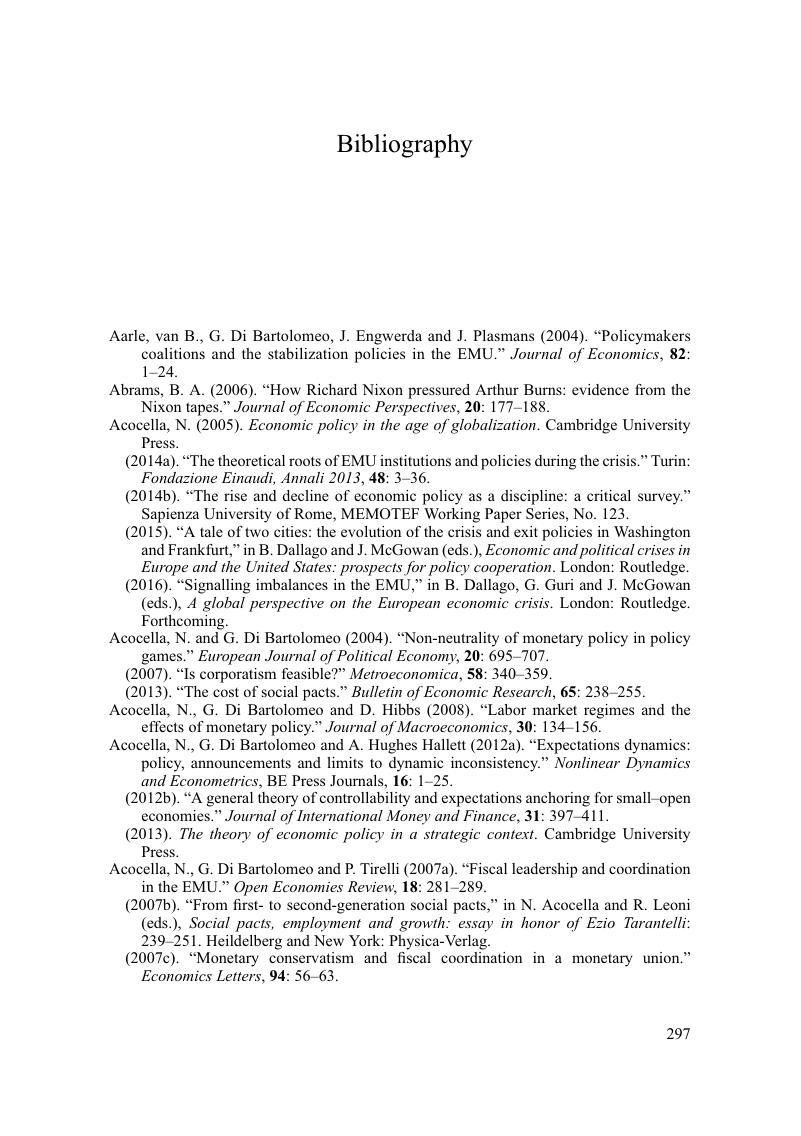Bibliography
Published online by Cambridge University Press: 05 June 2016
Summary

- Type
- Chapter
- Information
- Macroeconomic Paradigms and Economic PolicyFrom the Great Depression to the Great Recession, pp. 297 - 319Publisher: Cambridge University PressPrint publication year: 2016



